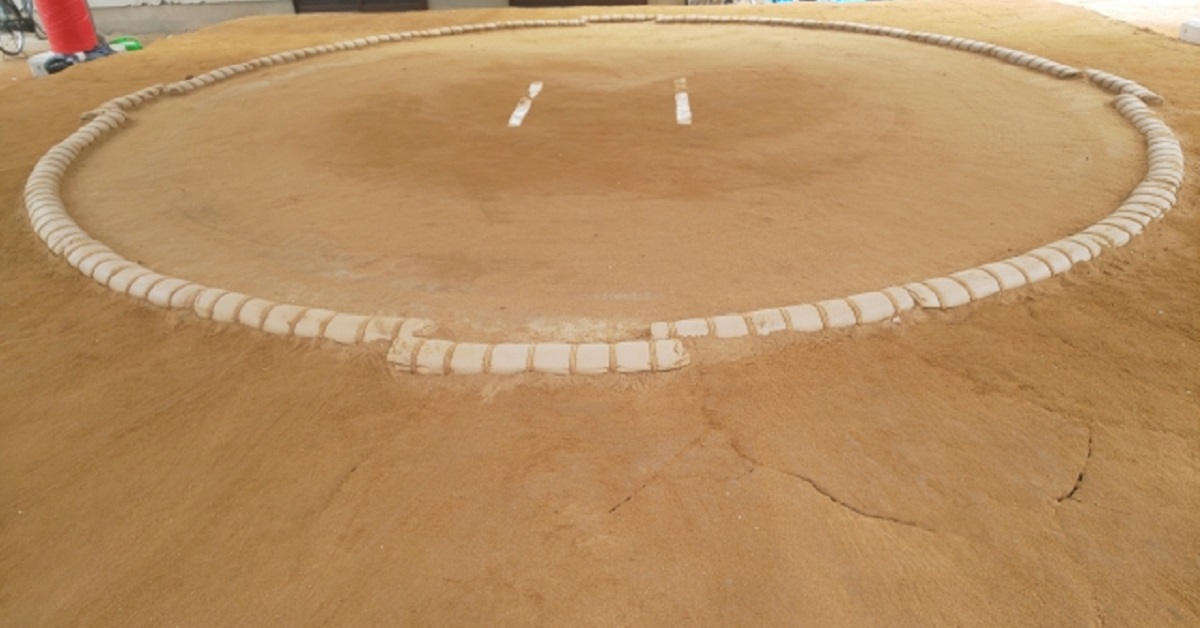Sunakaburi refers to the special seats located right beside the sumo ring, offering an unmatched view of Japan’s national sport. From here, spectators can see, hear, and even feel the impact of each bout, as sand and energy fly from the dohyo. For visitors seeking an authentic and rare cultural experience, Sunakaburi provides a front-row journey into the traditions of sumo.
Overview and Characteristics of Sunakaburi
Sunakaburi is officially called the “Tamari-seki”. In the Ryogoku Kokugikan arena, these seats are located directly around the dohyo, at the same level as the referees (gyoji) and judges. From here, you can observe even the smallest details of a wrestler’s muscles and breathing—an overwhelming sense of presence that cannot be experienced from other seats.
These seats are extremely limited in number and are often only available through lotteries or special sales. They are covered with cushions on the floor, and spectators are expected to sit in seiza (kneeling) or cross-legged, with certain posture rules during the match.
| Item | Details |
|---|---|
| Official Name | Tamari-seki |
| Origin of Nickname | Because sand flies onto the spectators from the dohyo |
| Location | Immediately outside the dohyo |
| Number of Seats | Limited (around 300 in Kokugikan) |
| Recommended Posture | Seiza or cross-legged |
Historical Background
The term “Sunakaburi” appears even in the Edo period’s sumo events. Since then, seats closest to the dohyo have been regarded as special. At the time, spectators felt pride in being showered with sand during intense bouts—it was part of the thrill. This tradition continues today, and the idea of being “close enough to be covered in sand” remains a hallmark of the experience.
The area around the dohyo is considered sacred, with special rituals held before and after matches. Sunakaburi is not just seating—it is a front-row connection to the core of sumo culture.
| Era | Seat Placement | Viewing Characteristics |
|---|---|---|
| Edo Period | Front row around the dohyo | Extremely close distance to wrestlers |
| Meiji Period | Formalized as events expanded | Etiquette became stricter |
| Modern Day | In dedicated arenas like Kokugikan | Clear rules for spectators |
Appeal and Uniqueness
The greatest appeal of Sunakaburi seats is the intense, multi-sensory experience. You feel the wrestlers’ collisions, hear the creak of the mawashi belt, and sense the tension in the air. Sometimes wrestlers even fall out of the ring toward the audience, and you must instinctively move aside.
Before matches, you can also watch rituals unique to sumo—such as purifying the ring with salt or rinsing the mouth with water—up close. These gestures are steeped in meaning and offer a direct gateway to understanding Japanese culture.
| Appeal Factor | Description |
|---|---|
| Visual | Wrestlers’ powerful movements right in front of you |
| Auditory | Clear breathing and collision sounds |
| Tactile | Feel the flying sand and rush of air |
| Cultural | Observe rituals and formal gestures up close |
Rules and Etiquette
Strict rules are in place to protect safety and uphold tradition in Sunakaburi seats. Breaking these rules can lead to removal from the venue. Photography and eating are prohibited, and stretching your legs is forbidden because wrestlers may fall into the seating area.
| Prohibited Action | Reason |
|---|---|
| Taking photos | Disrupts the flow of the match |
| Eating or drinking | Risk of dropping items into the dohyo |
| Wearing hats | Blocks others’ view |
| Stretching legs | Dangerous if wrestlers fall nearby |
Why It’s Recommended for Foreign Visitors
For tourists, Sunakaburi is not just about watching a sport—it’s about immersing in the essence of Japanese culture. You can feel the history, etiquette, and passion of the audience up close. Many visitors also combine this with a trip to the Sumo Museum or dining in nearby traditional restaurants for a full cultural day.
| Experience Value | Example |
|---|---|
| Cultural Insight | Learn the meaning of rituals and gestures |
| Emotional Impact | Witness intense, real matches up close |
| Linked Tourism | Pair with local sightseeing near Kokugikan |
Conclusion
Sunakaburi seats are the most thrilling way to watch sumo. Their proximity to the dohyo allows spectators to experience sumo through all five senses and to deeply understand Japan’s traditional culture. While observing etiquette is essential, the reward is an unmatched cultural encounter. For anyone who wants to connect with the history and spirit of Japan through sumo, Sunakaburi is a must-try.





コメント